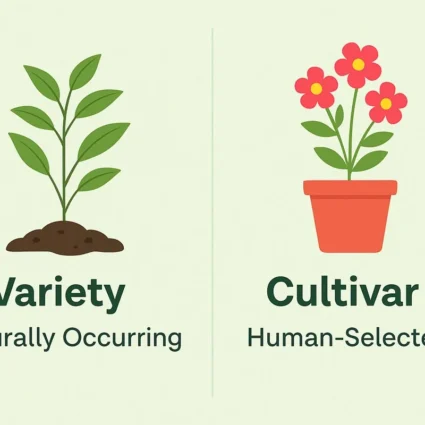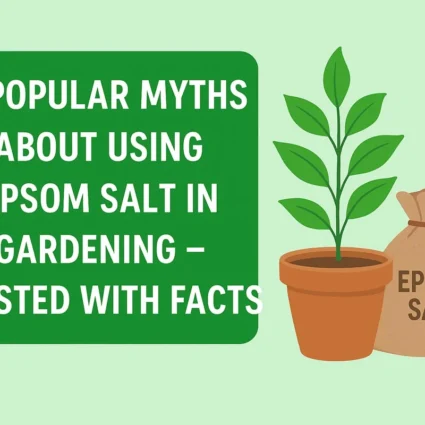
Dadi Nani Ke Nuskhe: Natural Remedies to Keep Plants Healthy at Home
If you grew up in India, you probably remember how our dadi (grandmother) or nani (maternal grandmother) always had a quick fix for every problem. Whether it was a cough, a stomach ache, or even stubborn stains on clothes, their kitchen always hid the perfect remedy. But what many don’t realize is that their treasure trove of knowledge also extended to gardening.
Before chemical fertilizers and pesticides took over, Indian households kept their plants healthy using kitchen scraps, Ayurvedic tricks, and natural hacks. These remedies were not only effective but also eco-friendly and cost-free. Today, as more people shift back to organic gardening, revisiting dadi-nani ke nuskhe feels both nostalgic and practical.
So, let’s explore some timeless natural remedies to keep your plants thriving—straight from the wisdom of our grandmothers.
1. Chai ki Patti (Used Tea Leaves) – A Free Fertilizer
Our grandmothers never wasted anything in the kitchen. The chai ki patti left after making tea often went straight into the garden.
- How to Use: Wash the used tea leaves, dry them slightly, and mix them into the soil.
- Benefits: Rich in nitrogen and tannins, they improve soil structure and help in faster leaf growth.
- Tip: Avoid adding sugar or milk residue; use only clean tea leaves.
2. Banana Peels – The Secret to Flowering Plants
Whenever bananas were eaten at home, the peels were never considered waste. Dadi would often say, “Isme phool khilane ki taakat hoti hai.”
- How to Use: Chop banana peels into small pieces and bury them near the roots.
- Benefits: Banana peels are rich in potassium and phosphorus, essential for flowering and fruiting.
- Perfect For: Rose, hibiscus, and indoor flowering plants.
Buttermilk (Chaas) – Natural Tonic for Plants
Remember when extra chaas was left in the kitchen? Instead of wasting it, nani would pour it into plants.
- How to Use: Dilute leftover buttermilk with 3 parts water and sprinkle near the roots.
- Benefits: Works as a mild fertilizer, strengthens plants, and also acts as a natural pesticide against fungal infections.
- Note: Use sparingly, as too much acidity can harm soil balance.
Also Read This :Glow-in-the-Dark Plants: The Future of Green Lighting
4. Mirchi-Garlic Spray – Homemade Pest Repellent
When insects attacked the plants, dadi didn’t run to the market for chemicals. She made her own mirchi-lehsun (chilli-garlic) spray.
- How to Make: Grind 5 garlic cloves + 2 green chillies + a spoon of neem oil in water. Leave it overnight, strain, and spray on plants.
- Benefits: Keeps away aphids, mealybugs, and whiteflies without harming the plant.
5. Neem Leaves & Neem Oil – The All-Rounder Remedy
If there was one magic ingredient our grandmothers trusted for both health and plants, it was neem.
Uses:
- Neem oil spray for pest control.
- Crushed neem leaves as organic mulch.
- Neem cake powder as slow-release fertilizer.
Benefits: Antifungal, antibacterial, and pest-repelling properties.
Even today, gardeners worldwide swear by neem—the same way our dadi-nani did decades ago.
6. Ash (Rakh) from Chulha – The Forgotten Fertilizer
In many rural homes, cooking was done on a chulha (wood-fired stove). The leftover ash (rakh) was sprinkled in the garden.
- How to Use: Mix ash lightly into the soil around plants.
- Benefits: Ash adds potassium and calcium, keeps snails/slugs away, and neutralizes acidic soil.
- Tip: Use only clean wood ash, not ash from coal.
7. Onion & Garlic Peels – Hidden Plant Boosters
Whenever onions or garlic were peeled, dadi collected the skins for plants.
- How to Use: Soak onion/garlic peels in water overnight and use this water for watering plants.
- Benefits: Adds sulfur and micronutrients, boosts immunity, and repels insects naturally.
Also Read This :Grandma’s Secret Remedy: 3 Plants More Powerful Than Tulsi
8. Rice Water & Dal Ka Paani – Kitchen Waste with Power
You might have seen your nani never threw away the water from washing rice or dal.
- Rice Water: Contains starch that promotes healthy microbial activity in soil.
- Dal Water: Packed with proteins that act as natural fertilizers.
This simple habit ensured that not a drop of nutrition from the kitchen was wasted.
9. Hing (Asafoetida) – The Pest Deterrent
Hing wasn’t just for digestion; dadi used it for plants too.
- How to Use: Dissolve a pinch of hing in a liter of water and spray on plants.
- Benefits: Protects plants from fungal infections and acts as an insect repellent.
10. Cow Dung & Panchagavya – Ancient Indian Elixirs
No list of dadi-nani nuskhe is complete without mentioning cow dung. It was the foundation of traditional Indian farming.
- How to Use:Dried cow dung cakes or slurry added to soil.
- Panchagavya: A mixture of cow dung, urine, milk, curd, and ghee—used as a powerful organic growth promoter.
- Benefits: Improves soil fertility, enhances microbial activity, and strengthens plants naturally.
Also Read This :Sustainable Gardening Tips Every Urban Indian Should Try
Why These Remedies Still Matter Today
In today’s world of chemical fertilizers and pesticides, these dadi-nani ke nuskhe remind us that nature already has the solutions. They are:
- Cost-effective
- Eco-friendly
- Safe for health
- Easy to make at home
More importantly, they connect us with a sustainable way of living, where nothing goes to waste, and every scrap from the kitchen has a second life in the garden.
Conclusion
Our dadi and nani might not have had degrees in horticulture, but their wisdom was priceless. They taught us that caring for plants doesn’t need expensive products—just a little love, patience, and natural remedies.
The next time you peel an onion, finish your chai, or have leftover chaas, remember: you’re holding a secret fertilizer in your hands. 🌿
So, let’s revive these traditional remedies and make our homes greener, healthier, and closer to nature. After all, some of the best gardening tips don’t come from books but from the whispers of our grandmothers’ kitchens. 🌸
Also Read This :Things to Keep in Mind While Buying Plants from a Nursery
FAQs
Q1: Are dadi-nani remedies safe for all plants?
Yes, most are safe, but always test in small amounts first.
Q2: How often should I use kitchen remedies on plants?
Once every 10–15 days is ideal.
Q3: Can these remedies replace fertilizers completely?
For small home gardens, yes. For larger farms, they can supplement natural farming methods.
Q4: Do these remedies work against all pests?
They are effective for common garden pests, though severe infestations may need stronger organic solutions.
Q5: Which is the easiest dadi-nani nuska for beginners?
Start with tea leaves or banana peel—they’re simple, safe, and show quick results.




